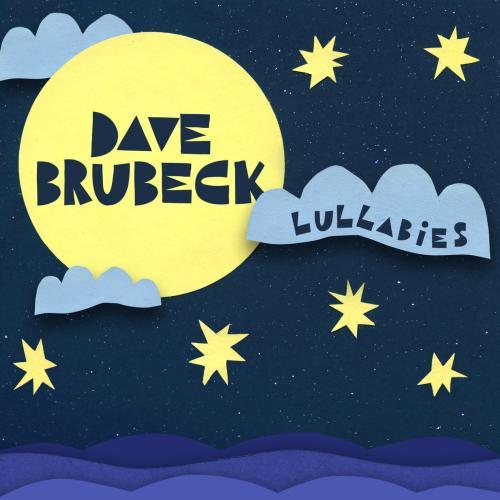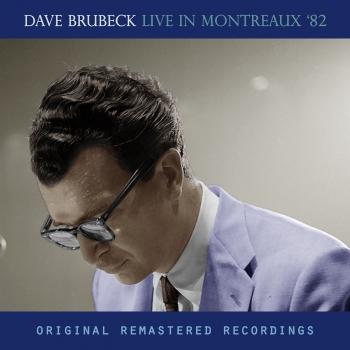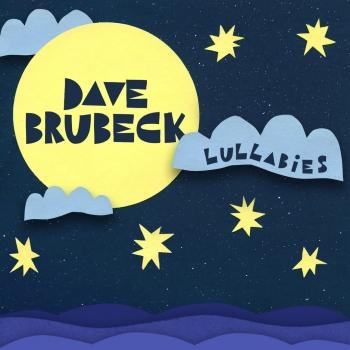
Lullabies Dave Brubeck
Album Info
Album Veröffentlichung:
2020
HRA-Veröffentlichung:
06.11.2020
Label: Dave Brubeck
Genre: Instrumental
Subgenre: Piano
Interpret: Dave Brubeck
Komponist: Dave Brubeck (1920-2012)
Das Album enthält Albumcover
Entschuldigen Sie bitte!
Sehr geehrter HIGHRESAUDIO Besucher,
leider kann das Album zurzeit aufgrund von Länder- und Lizenzbeschränkungen nicht gekauft werden oder uns liegt der offizielle Veröffentlichungstermin für Ihr Land noch nicht vor. Wir aktualisieren unsere Veröffentlichungstermine ein- bis zweimal die Woche. Bitte schauen Sie ab und zu mal wieder rein.
Wir empfehlen Ihnen das Album auf Ihre Merkliste zu setzen.
Wir bedanken uns für Ihr Verständnis und Ihre Geduld.
Ihr, HIGHRESAUDIO
- 1 Brahms Lullaby 03:07
- 2 When It’s Sleepy Time Down South 03:29
- 3 Over The Rainbow 03:01
- 4 Danny Boy 03:18
- 5 Going To Sleep 02:13
- 6 There’s No Place Like Home 02:28
- 7 Lullaby For Iola 02:47
- 8 Koto Song 04:22
- 9 All Through The Night 03:06
- 10 Softly, William, Softly 02:53
- 11 A Dream Is A Wish Your Heart Makes 02:38
- 12 Briar Bush 02:19
- 13 Sleep 02:21
- 14 Summertime 03:31
- 15 Brahms Lullaby 01:02
Info zu Lullabies
Entspannter Jazz zum Träumen - von einer Musiklegende! Piano-Legende Dave Brubeck, der am 6. Dezember dieses Jahres seinen 100. Geburtstag feiern würde, ist natürlich vor allen Dingen durch seinen rhythmisch vertrackten Welterfolg "Take 5" bekannt geworden, war aber auch ein Meister der leiseren Töne. Das wird ein am 6. November erscheinendes, bislang unveröffentlichtes Album mit dem Titel "Lullabies" belegen, das Brubeck 2011, als 91-Jähriger aufgenommen hat.
Der mit unzähligen Preisen, u.a. dem Grammy Lifetime Achievement Award in 1996, ausgezeichnete Pianist transferiert darauf scheinbar simple Wiegenlieder, Kinderlieder und Balladen durch sein Spiel in kleine Wunderwerke, die eingeschworene Jazzfans genauso verzaubern sollten wie einen unvorbereiteten Hörer.
Schlaflieder für die Enkel: Aufgenommen hat Brubeck die fünfzehn unveröffentlichten Perlen, in ungewöhnlicher Klarheit und Schönheit, für seine Enkel. Darauf freuen dürfen sich natürlich auch alle anderen.
Zu den bekannten Stücken gehören Over The Rainbow – also ich kann das nicht mehr hören, ist mir zu kitschig, aber vielleicht hören Kinder das ja anders. Auch der Koto-Song von Brubecks Japan-Album ist dabei, er klingt aber nicht so exotisch wie das Original, und, sorry, mir fehlt hier Paul Desmond am AltSax. Summertime kann man immer wieder hören. „Hush, little Baby, don’t you cry”…bei Brubeck klingt es gar nicht so sehnsuchtsvoll, eher tröstlich. Dann am Ende noch einmal kurz Brahms Lullaby angespielt, jetzt aber Licht aus und schlafen.
Brubeck spielt durchgängig sehr ruhig, auch mit kleinen Improvisationen, doch im Vordergrund steht die Melodie. Es klingt irgendwie nach ... ‚früher‘, eben nach Kindheit, doch diese Zeit ist vorbei, schön nochmal reinzuhören. Aber für mich wird Brubeck immer der junge Pianist aus Berkeley bleiben, der mit Paul Desmond, Eugene Wright und Joe Morello neue Wege ging, z. B. mit Unsquare Dance.
Dave Brubeck, Klavier
Dave Brubeck
designated a “Living Legend” by the Library of Congress, was one of the most active and popular musicians in both the jazz and classical worlds. With a career that spanned over six decades, his experiments in odd time signatures, improvised counterpoint, polyrhythm and polytonality remain hallmarks of innovation.
Born into a musical family in Concord, California — his two older brothers were also professional musicians — he began piano lessons with his mother at age four. He was 12 when his father moved the family to a cattle ranch in the foothills of the Sierras. Dave’s life changed dramatically. Piano lessons ended and cowboy life began. He worked with his father on the 45,000 acre cattle ranch. When he was 14, he started playing in local dance bands on weekends. When he enrolled at the College of the Pacific, in Stockton, California, his intention was to study veterinary medicine and return to the ranch. While working his way through school as a pianist in local nightclubs, the lure of jazz became irresistible and he changed his major to music. Graduating in 1942, he enlisted in the Army, and shortly thereafter married Iola Whitlock, a fellow student at Pacific. While serving in Patton’s Army in Europe, he led a racially integrated band. After his discharge from military service in 1946, he enrolled at Mills College in Oakland, California to study composition with French composer, Darius Milhaud. Milhaud encouraged him to pursue a career in jazz and to incorporate jazz elements into his compositions. This cross-genre experimentation with like-minded Milhaud students led to the formation of the Dave Brubeck Octet in 1947. In 1949, Brubeck with Cal Tjader and Ron Crotty, fellow Octet members, cut their first award-winning Dave Brubeck Trio recordings. After suffering a near fatal diving accident in 1951, Dave formed the Dave Brubeck Quartet with alto saxophonist Paul Desmond, who was also a member of the Octet. The legendary Brubeck-Desmond collaboration lasted seventeen years and beyond.
The Dave Brubeck Quartet’s recordings and concert appearances on college campuses in the ‘50s and early ‘60s introduced jazz to thousands of young people. The Quartet’s audiences were not limited to students, however. The group played in jazz clubs in every major city and toured in package shows with such artists as Duke Ellington, Ella Fitzgerald, Charlie Parker, Dizzy Gillespie, and Stan Getz. The Dave Brubeck Quartet repeatedly won top honors in trade magazines and critic’s and reader’s polls. In 1954 Dave Brubeck’s portrait appeared on the cover of Time Magazine with a story about the jazz renaissance and Brubeck’s phenomenal ascendancy.
In 1958 the Quartet made their first of many international tours. The U.S. State Department sponsored the Quartet’s performances in Poland, India, Turkey, Sri Lanka, Afghanistan, Pakistan, Iran and Iraq. Exposure to many different cultures was reflected in the group’s repertoire that sometimes incorporated exotic elements. The 1959 recording “Time Out” experimented in time signatures beyond the usual jazz 4/4. To everyone’s surprise “Time Out” became the first jazz album to sell over a million copies and “Blue Rondo a la Turk” and “Take Five” (now in the Grammy Hall of Fame) began to appear on jukeboxes throughout the world.
Early in his career Brubeck wrote primarily for this Quartet, and some of those pieces, such as “In Your Own Sweet Way” and “The Duke” became part of standard jazz repertoire. His first orchestral composition, “Elementals“, written for an improvising jazz combo and symphony orchestra was premiered and recorded in 1962. Choreographed by Lar Lubovitch, “Elemental Brubeck” is currently in the repertoire of the San Francisco Ballet and several other dance companies.
Throughout his career Brubeck experimented with integrating jazz into classical forms. In 1959 his Quartet premiered and recorded his brother Howard’s “Dialogues for Jazz Combo and Orchestra” with the New York Philharmonic, Leonard Bernstein conducting. In 1960 he composed “Points on Jazz” for the American Ballet Theatre, and in later decades composed for and toured with the Murray Louis Dance Company. His musical theater piece “The Real Ambassadors” starring Louis Armstrong and Carmen McRae was recorded and performed to great acclaim at the 1962 Monterey Jazz Festival.
The “classic” Dave Brubeck Quartet (Paul Desmond, alto sax from 1951; Eugene Wright, bass from 1958; Joe Morello, drums from 1956) was dissolved December 1967. Baritone saxophonist Gerry Mulligan joined a newly formed Dave Brubeck Trio (with Jack Six, bass and Alan Dawson, drums) the following year. This group recorded and toured the world together for seven years. In this period Brubeck also performed with three of his musical sons, Darius, Chris and Dan billed as “Two Generations of Brubeck” frequently with Gerry Mulligan or Paul Desmond as guest artists. ...
Dieses Album enthält kein Booklet








